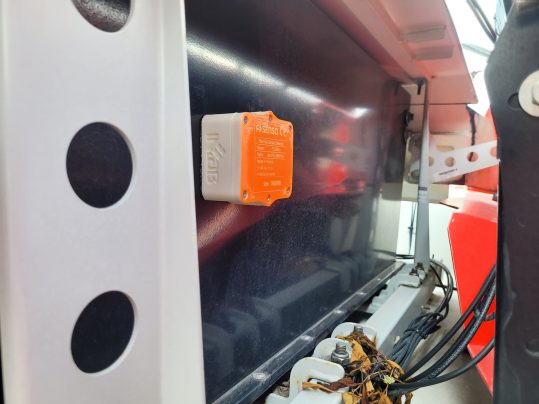Beholder - Detection of fire hazards

Early fire hazard detection system
The problem of fire hazards occurs even in the currently used, modern technologies for storing and supplying electricity. These threats are extremely dangerous or at least costly when the vehicles are stationary, turned off and parked close to each other. This situation occurs, for example, in the case of overnight stationing of a fleet of vehicles, e.g. city vehicles, in a depot or hangar.
The field solution that responds to this type of threat is built on the basis of the Beholder Platform, an early detection, signaling and alarming system for fire hazards of traction batteries in electric and hybrid vehicles.

Principle of operation and advantages
Information is collected in real time directly from vehicles and their surroundings using special, non-invasive detectors that ensure continuous monitoring, early detection and warning against fire hazards. On their basis, the system makes a decision to immediately, i.e. immediately after the occurrence of a threat, notify the dispatcher or relevant services.
The system analyzes a series of events from a set of detectors installed on vehicles to detect thermal anomalies in battery packs as soon as possible, which can result in serious fires and property damage. It is the temperature that is crucial in early warning of hazards, because at a certain stage of temperature increase, the chemical reactions in the battery are not yet violent. It is therefore possible to take countermeasures, e.g. by re-parking neighboring vehicles or isolating a threatened vehicle. However, when fire and smoke appear, when the risk of a violent reaction or simply an explosion increases many times, unfortunately, there is usually no time for any remedial action.
The system has an extensive self-diagnosis module and independently informs operators about problems that could limit its readiness to detect threats and alert. In addition, thanks to the analysis of historical data from detectors, it is possible to apply a preventive approach, which consists in detecting an unhealthy and incorrectly behaving packet long before a potential threat.
Threat analysis
Threat analysis in the system is carried out in real time based on telemetry data sent via radio by detectors installed on battery packs of vehicles under monitoring. Due to its own battery power supply, operating even at -40 degrees C, the system remains fully active even after the vehicle is completely turned off. The installation of the detectors is non-invasive, i.e. in particular without interfering with the vehicle sheathing.
The detectors make frequent (every 10-20 seconds) measurements through their two sensors (each detector has two sensors), one of which measures the contact (surface) temperature in an inertial way to prevent false readings due to irradiation by the sun, for example. The second, on the other hand, measures the ambient (surrounding air) temperature. Thanks to this, the detector knows exactly from which direction the heat rise came. If nothing noteworthy happens, the device saves battery and communicates with the rest of the system sporadically for control and verification purposes. If, on the other hand, it detects a thermal hazard associated with an excessive temperature level, it immediately transmits the relevant data via radio to the central software, which decides on further action. After verifying the data, the algorithms can decide to immediately trigger the alarm signaling about the threat, which is done by:
- turning on the siren and alarm lighting and sending the numbers of endangered vehicles to the text terminals of signaling devices along with the codes of the detectors that indicated the threat,
- sending an SMS and/or e-mail with details of the threat to the indicated group of people,
- providing an alarm card in the web application, which contains full information about the event (including temperature rise charts) to provide situational awareness to system operators who will decide how to react to the threat.
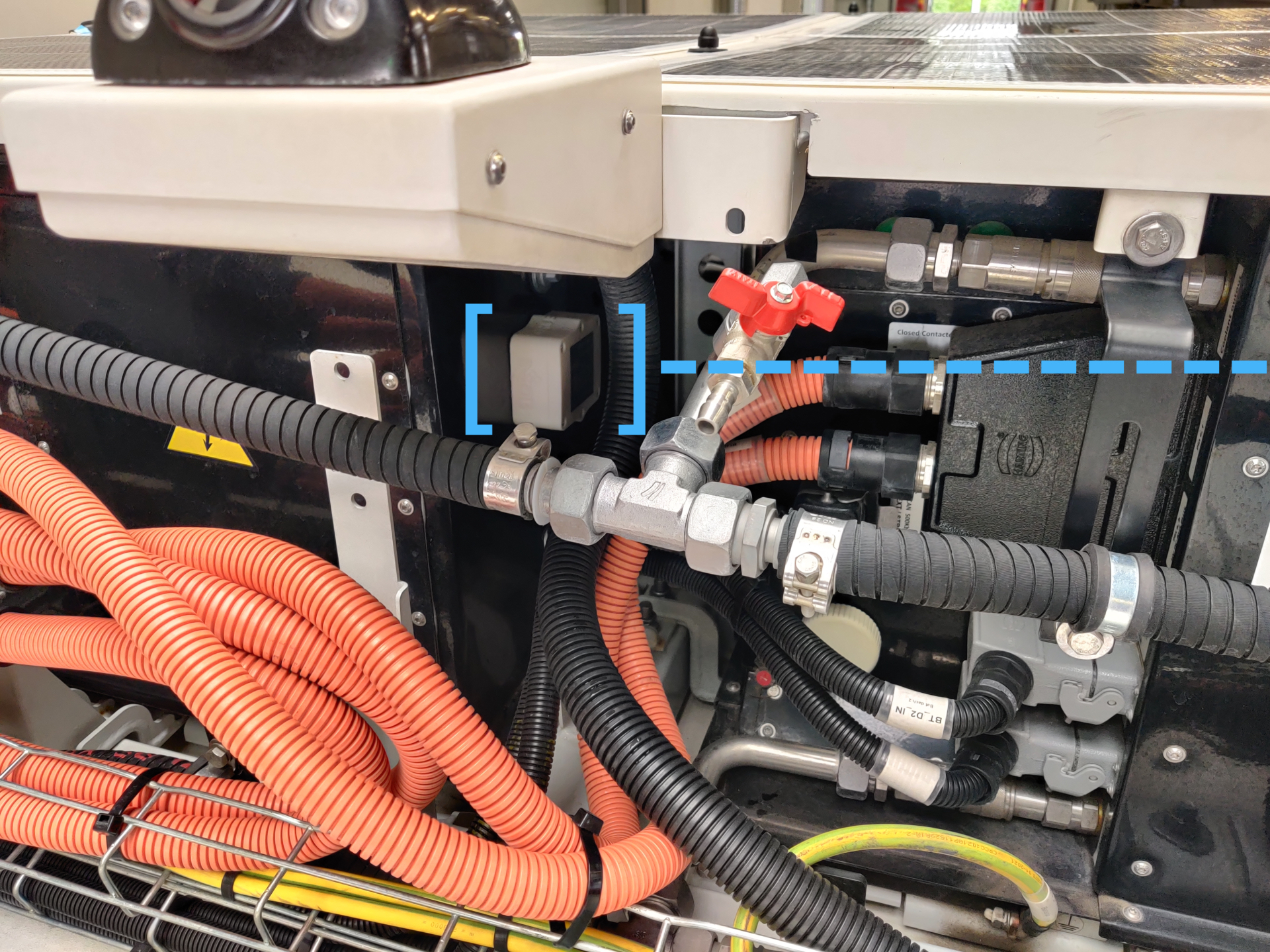


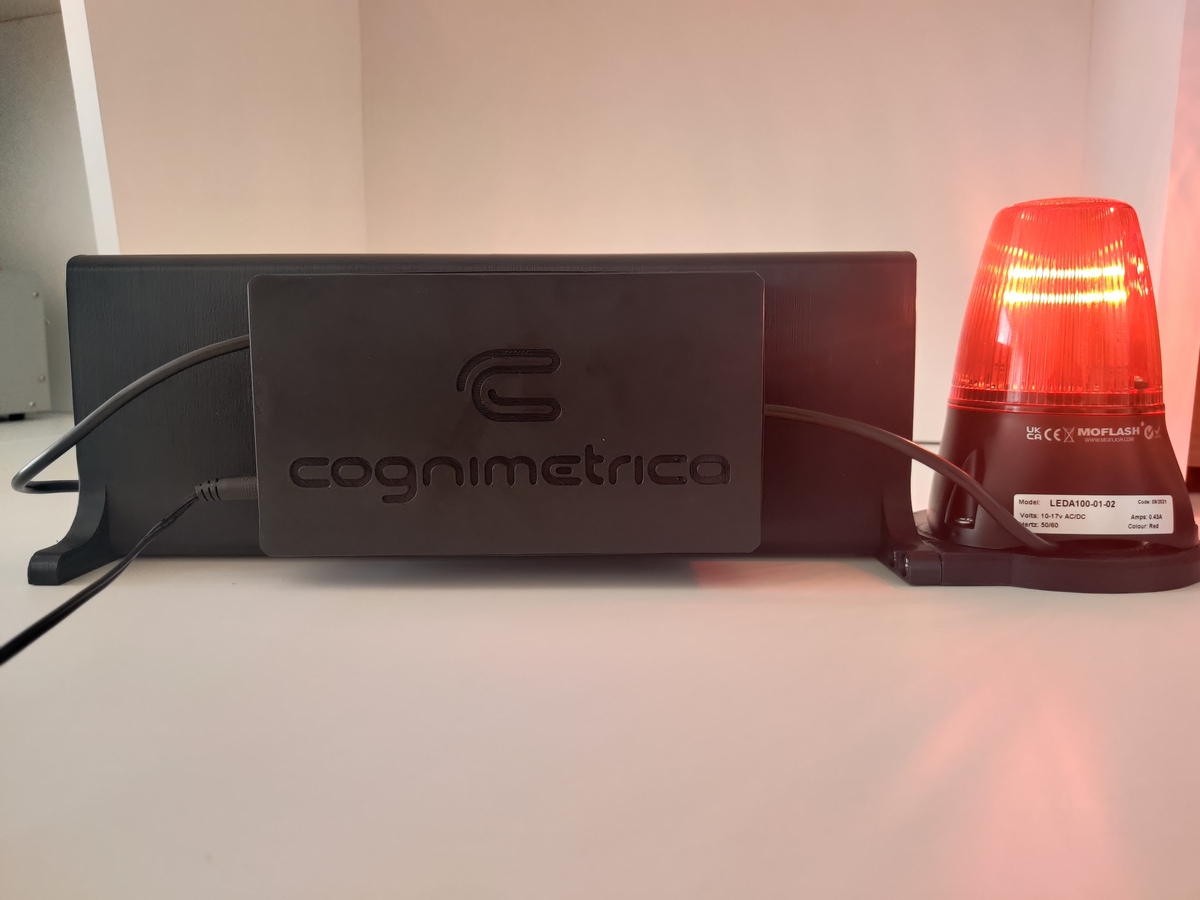
Component elements
The system consists of the following components:
- Detectors responsible for collecting information from the field:
- Various types of sensors, sensors, meters or cameras that send and receive measurement data using communication gates.
- They are characterized by non-invasive assembly and very low power consumption and long operating range.
- Typically, 1 detector is installed per 1 battery pack and a minimum of 2 per vehicle.
- Communication gateways, i.e. devices responsible for receiving data from end devices:
- Radio hubs (usually 2-3 per location) with equipment (e.g. antennas) with a range of approx. 2 km.
- They are also responsible for converting messages from devices to packets of standard communication protocols (IP).
- Specialized industrial servers responsible for collecting and storing data, which are then analyzed by algorithms of dedicated domain applications.
- Alarm and information devices:
- Audio-visual signaling devices with text terminal.
- SMS, voice, etc. gateways.
- The central application, i.e. a set of algorithms and control solutions responsible for the system’s response to given events (e.g. detection and notification of the possibility of a fire). It analyzes information from various sources, trying to detect anomalies and potentially dangerous situations.
Thermal detectors
The key to success in early warning is spot detection. Therefore, in the system, the dominant source of information are measurements directly on battery packs on vehicles. There are always at least two detectors installed on a vehicle, and usually there are 4 of them.
Each thermal detector is equipped with 2 temperature sensors – a contact sensor, measuring the temperature on the housing, at the point of contact with the bus, and an ambient sensor, measuring the ambient temperature. As a result, the detector knows where does the heat rise come from.
As we are dealing with electric and hybrid vehicles and trolleybuses, the assumption is a non-invasive method of mounting the detectors. The detectors are installed without any wiring, most often by gluing the detector to a selected surface (battery housing). The detector is equipped with a special heat conductive tape.
The dimensions of the device are approx. 40 x 70 x 90 mm.
GPS position detectors
GPS parking position detectors play a supplementary role to the main functions of the system. Their use enables in the event of a fire hazard:
- Faster access to the endangered vehicle,
- Assess risk and respond to hazards from nearby vehicles.
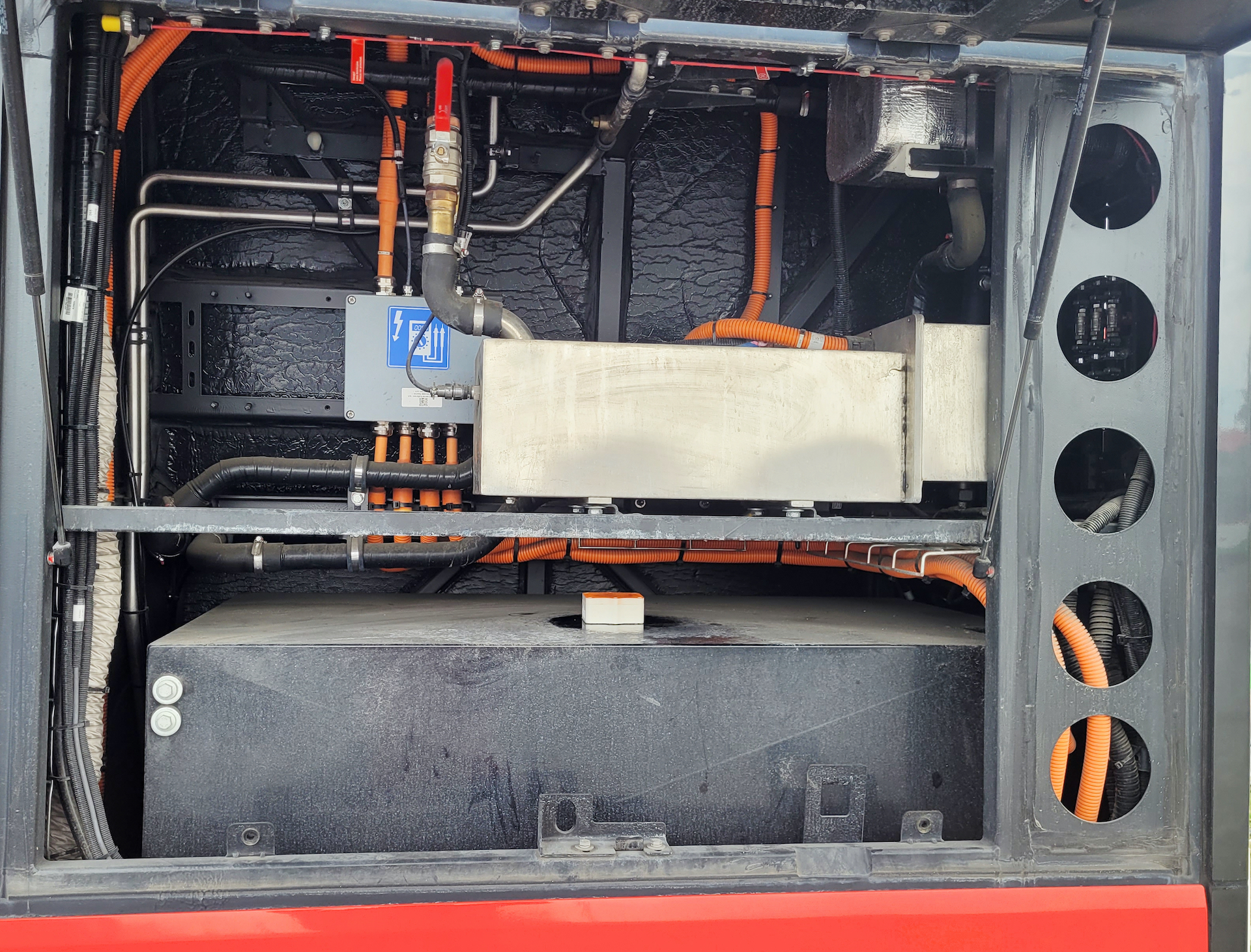

The detectors are completely independent of the vehicle system installation, both in terms of communication and energy. Power is battery based on lithium-thionyl chloride technology.
The detectors communicate with the environment via radio at the frequency of 868 MHz and power below 25mW (the system complies with the EU SRD directive), which means that their use does not require a radio license from the end user. The SRD directive imposes strict restrictions on the occupancy and use of the band.
The detectors adapt their operating parameters (e.g. measurement frequency) to the current situation in order to, on the one hand, save battery power, optimize the occupancy of the communication band, and at the same time react quickly to changes in measured values.
The battery life is up to 10 years and more, because the intelligent detector optimizes energy consumption, e.g. by selecting the connection frequency. It does not send data when it is not needed and in turn increases the number of messages when a potential threat is detected.
The range from the sensors to the communication gate – depending on the antenna used and its mounting location, is even several kilometers.
Depending on the needs, it is possible to use various types of sensors in the solution. However, the requirement is that they have been certified for the system. Certified sensors are in particular: AI-SENSO radio detectors by In-Lab, Hikvision thermal imaging cameras and others.
In-Lab AI-SENSO
Detectors that are compatible and that can be used in the implementation of the Beholder system include: AI-SENSO devices by In-Lab.
AI-SENSO is a family of intelligent battery wireless sensors for measuring selected physical quantities, such as UV-C radiation level, humidity, temperature, GPS position and other necessary parameters.
Sensors are suitable for easy and convenient use in domain systems such as Beholder Cloud Basic or Beholder Pro, thanks to real-time integration.
AI-SENSO sensors are certified for use in the automotive industry and on buses of leading manufacturers.
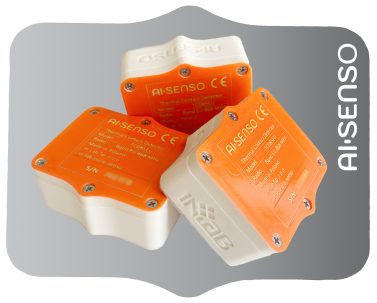

Central application
In each version of the system, a convenient (central) management application is available, except that in the Cloud Basic version it works and is available through an external computing cloud, while in the Pro version it works autonomously on local resources and the customer’s network.
It is the heart of the system, gathering configuration tools, algorithms that process and interpret millions of messages and measurement data as well as images collected by remote sensors or other available alerting mechanisms.
The main functionalities of the solution include:
- AI module aimed at early detection of threats,
- Constant monitoring of the status of the entire system (detection of anomalies in the operation of individual parts of the system, e.g. a damaged detector or siren),
- Possibility to parameterize threat response procedures (alerts, automatic processes, notifications),
- Ability to configure automatic alarm procedures and integration with additional equipment, e.g. sirens or emergency lighting,
- Convenient management dashboard concisely presenting the current status of the system.
Versions
Beholder Cloud Basic
- The basic version of the system that allows you to quickly implement the necessary minimum level of security on individual vehicles.
- Low start-up cost – provides basic monitoring and alerting services about threats.
- A starting point for the gradual implementation of the target solution.
- Notification via SMS to selected dispatchers and supports up to 10 detectors and/or 5 vehicles.
- Communication via a single gateway that communicates with the computing cloud and servers operated by Cognimetrica via cellular network links.
- Ability to seamlessly migrate to Beholder Pro.
Beholder Pro
- It operates as part of the client’s corporate intranet and is independent of external cloud computing resources, as well as mobile operator services.
- Higher reliability and responsiveness of the solution.
- There are no limits (appearing in the Cloud Basic version) as to the number of sensors / vehicles, the number of necessary gateways or the number of vehicle stations (depots).
- Greater scalability (even hundreds of monitored vehicles), security (redundancy of system elements) and operating range.
- System coverage (with two antennas / gateways) up to several kilometers.
- A safe assumption with this configuration is a range of approx. 2 km.
- Various types of notifications: alarms, sirens, information boards, text messages, ringing, etc.
Additional parameters
The temperature range of the system operation is in the range from -40 to +85 degrees Celsius in continuous measurement and approx. +100 degrees in instantaneous measurement.
All field devices, i.e. detectors, antennas, gateways, etc. are made in a version resistant to weather conditions and mechanical damage (heavy duty, waterproof).
In addition to continuous fire risk monitoring, the system performs constant self-diagnostics to always ensure full readiness for operation.
